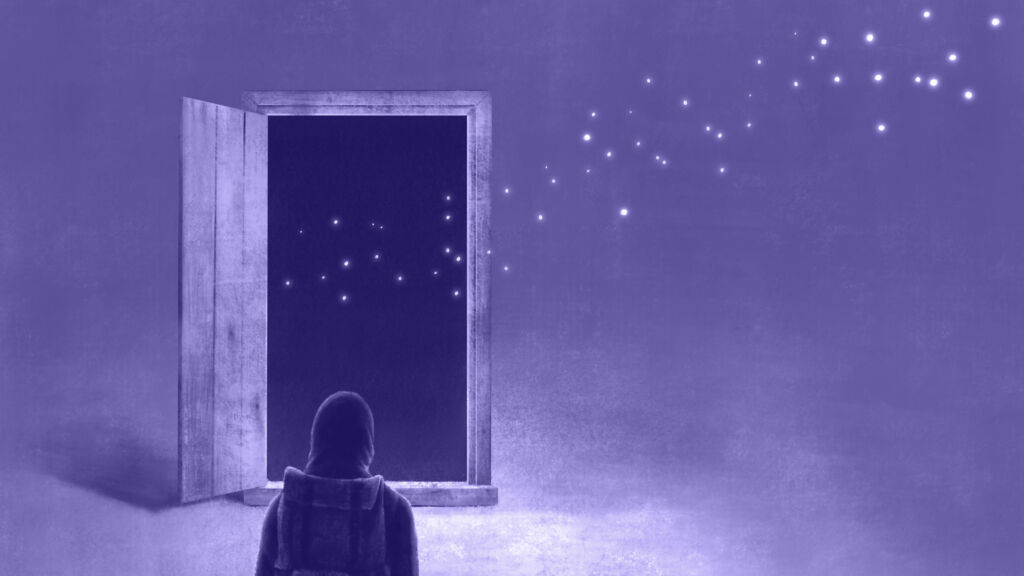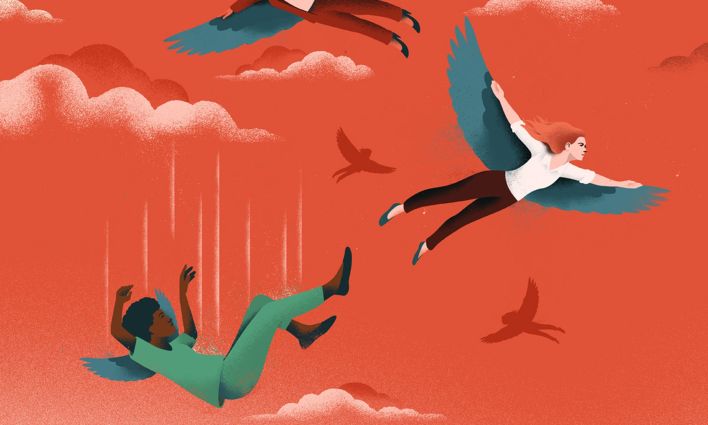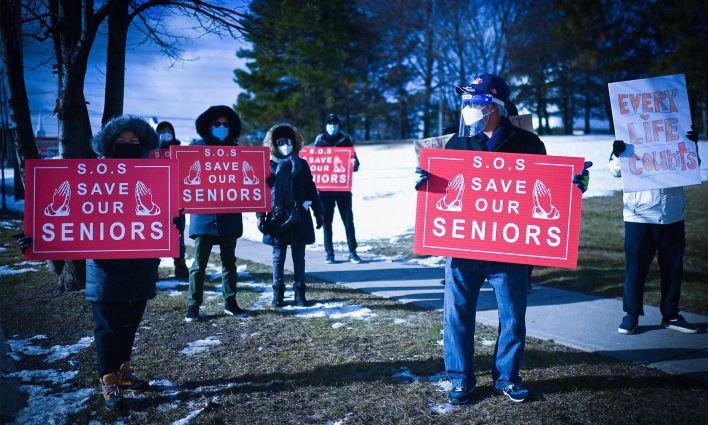When COVID-19 first struck in Canada, media reports described a surge of deaths in long-term care homes, retirement homes, and congregate residences. Headlines announced the particular dangers of COVID-19 to older people, disabled people, fat people, and people with “comorbidities” or “pre-existing conditions.” Authorities sometimes mentioned the underfunding of the care sector, poor wages, unjust staffing policies, and inadequate infection control practices as factors contributing to the upsurge in COVID-19 deaths. Most headlines evidenced ableist thinking in their suggestions that the underlying cause of the tragedy rested in the bodies of populations living in these settings – those they described as uniquely or naturally “vulnerable” to dying from COVID-19.
As collapse threatened the medical system, governments put into place triage protocols that denied life-saving care on the basis of perceived “frailty,” despite their clear violation of the human rights of disabled and older people. Alongside the rapid creation of emergency income support programs that excluded disabled people who receive income supports such as the Ontario Disability Support Program (a provincial support program that amounts to roughly half of the emergency benefit per month) and the almost total lack of meaningful protective measures for workers designated as “essential,” legal and policy responses to COVID-19 underlined who is valued and who is considered disposable within Canadian society. The inequity that the pandemic laid bare reveals a society structured by ableism, racism, and other “isms” that undergird neoliberal capitalism, wherein anyone designated as “less productive” is seen as burdensome and even expendable. The treatment of disabled people during the crisis is just the most recent manifestation of an ongoing trajectory of ableist exclusion and devaluation: a better-dead-than-disabled-mindset. For example, instead of addressing our unmet needs or responding to our desires and interests, government laws and policies such as Medical Assistance in Dying (MAiD) legislation and inadequate disability income support programs have deleterious effects on disability communities, intensifying and materializing the ableist belief that disabled lives are worth very little.
The COVID-19 crisis has revealed the necessity of changing people’s taken-for-granted understandings of disability, to provoke a transformation in how people perceive living with disability and difference. If people understood disability and difference as part of life, as basic to the story of humanity, as a site of creativity and culture-making, and as something with which everyone has a relationship, then our policies would reflect the value and vitality of disabled life and our collective health, safety, and well-being would vastly improve.
The non-disabled world often regards disability as the result of a problem inherent in an individual. From this perspective, systems such as healthcare and education seek to change – that is, fix or cure– the disabled person so we can fit into existing social arrangements. Disability activists and disability studies scholars such as Rosemarie Garland Thomson have countered this viewpoint by forwarding our understanding that disability results from a mismatch or misfit between a person’s body, mind, and environment. Instead of trying to fix or cure disabled people, we must focus on changing our surroundings to welcome differences and create space for people as they are.
The COVID-19 crisis shows that a hyper-individualized approach to access is inadequate.
This disability-affirmative perspective has given rise to laws and policies mandating accessibility for disabled people. In Canada, provincial and federal accessibility legislation has resulted in changes in many areas, including the built environment, workplace practices, communication, and more.
Legal and policy changes mandating accessibility are necessary and welcome. However, disability activists, artists, and scholars have noted that the limited enforcement of accessibility laws results in ongoing exclusion and that laws alone do little to affirm the value of disabled life. This is because accessibility legislation, disability rights conventions, case law, and policies tend to make relatively minor modifications to existing ways of doing things to accommodate individuals. This overlooks the social and political potential of disability culture to transform how we understand access and how we all relate to disability. We can also critique legal orientations to disability rights for the ways they are mobilized defensively – when a barrier is experienced, for example – rather than proactively to institute systemic change.
The COVID-19 crisis shows that a hyper-individualized approach to access is inadequate. The sudden presence of a rapidly spreading virus made established ways of working and living impossible for the non-disabled world, underscoring the fact that current worldly arrangements, such as workplace practices, are difficult for many to navigate – disabled and non-disabled alike. And beyond the pandemic, most – if not all – people will at some point experience disability, often because of illness, accidents, or aging. Responses to the crisis have naturalized disabled and older people’s vulnerability to death and framed it as tragic rather than criminal whilst protecting privileged workers through rapid pivots that brought work and social life home, which reveals and challenges the pervasiveness of ableism in our society. Such responses point to the urgency of establishing other ways of living together and caring for each other.
Many of the strategies our society adopted to bring work and life home were originally developed by the disability community. Disability culture has always put access at the forefront, working to expand how we define and practice access in ways that challenge social norms and typical or normative ways of doing things. As disability studies scholar-activist Catherine Frazee writes, “Disabled people don’t seek merely to participate in Canadian culture, we want to create it, shape, stretch it beyond its tidy edges.” As members of the disability community, we resist calls to return to a “normal,” for such a return does not centre our knowledge and practices of access.
To enact access collectively, the non-disabled world can learn from disability communities and disability culture, including the disability arts movement, which recognize that access is fundamental to how we work and live. Critical approaches to access allow us to shift from a focus on accommodating individuals toward undertaking access as a collective or distributed responsibility that affirms disability and difference.
Open Access' "goal is to remake culture with disabled people at the centre, making access foundational instead of an afterthought."
Changing Culture through Critical Access Perspectives
Disability artist Carmen Papalia has developed a practice called “Open Access” to put a critical access approach into action. Papalia explains that Open Access recognizes that each person holds expert knowledge of their body and their environment. Instead of crossing off a predefined checklist, Open Access is an ongoing response in which access is co-designed by the people who will be present in a space, whether that be a workspace or a cultural space. Open Access invites everyone to think about who might be present and who has been included (or excluded) in the past, with the goal of welcoming everyone into the space.
We take up the term “Open Access” to describe our expansive and evolving approach to access. Its goal is to remake culture with disabled people at the centre, making access foundational instead of an afterthought. It recognizes that access must be an ongoing political commitment, and that there can be no straightforward solution to access. To facilitate the commitment of affirming disability as valuable and desirable through access, we consider the possibilities of what access can be before delving into its practice.
For disabled writer-activist Mia Mingus, access occurs in relationships, an idea that she calls “access intimacy.” She describes it as “that elusive, hard to describe feeling when someone else ‘gets’ your access needs… or the way your body relaxes and opens up with someone when all your access needs are being met.” Mingus explains that this sense of intimacy may take place in an ongoing relationship or arise in an encounter with a stranger. Like all forms of intimacy, we cannot force access intimacy, but we can create the conditions for it to occur by promoting the idea that disability is vital and valuable in the places where we live and work.
We know that people living with disabilities and differences are not a homogenous group, and so we must recognize how disability intersects with other spaces of belonging and othering in ways that shape people’s access needs and requirements. Anishinaabe scholar Dolleen Tisawii'ashii Manning highlights the necessity of decolonizing access. Across Turtle Island and the world, colonialism has caused disproportionate impairment in Indigenous populations. On the lands currently called Canada, the rate of disabilities among Indigenous people is twice that of non-Indigenous people. As Manning points out, the deficiency-based concept of disability was not part of Anishinaabe world views prior to contact. Colonialism’s production of disability and its imposition of deficiency-based concepts of disability creates an urgent need for Anishinaabe and other Indigenous Peoples to lead conversations about their experiences and needs living with what colonial systems call “disability.”
Practicing Access During a Pandemic
The COVID-19 pandemic illustrates our potential to do things differently. Here, we highlight three examples of what an open access approach could look like in practice – both during and beyond the immediate pandemic. Everyone has access needs, but we centre disabled people in illustrating how open access works in practice. The examples we cite are of people with specific access needs, but a wide range of access needs will likely be present in any group of people, including people who do not identify as disabled, who do not have a diagnosed condition, or who do see themselves as living with a difference.
Accessible online communication practices
With the rise of video conferencing in work and social life, disability communities have developed protocols to make online spaces more accessible. To make communication more accessible for Blind/low vision users, speakers say their name when they begin to speak and indicate when they have finished speaking such as by saying “check” or “that was the end of my thought.” Speakers share verbally what’s happening on screen, interjecting comments like “I see that several people on the call are smiling, clapping and giving a thumbs up.” To increase accessibility for D/deaf or hard of hearing people, a speaker might talk slowly to allow sign language interpreters to sign in sync with their words and live transcription to follow at a fair pace. Participants can use their body language to interact with speakers: giving applause in ASL, LSQ or another sign language, smiling, or gesturing to express their feelings. Participants might also use built-in features like emojis to convey reactions without the interruption or confusion that cross-talk can cause.
Access guides
Access guides are documents containing accessibility information about a space and/or event, including online spaces and gatherings, that inform participants of what to expect. They take out the “guesswork,” and redistribute the untold labour that many disabled people must take on before attending an event by preemptively communicating access. Access guides give users a multi-sensory picture of what it feels like to get to and inhabit a space. They approach access as iterative, evolving, and welcoming co-design by people, especially disabled people who will be in the space. Organizers distribute access guides well before an event takes place or people occupy a space so that users know what to expect and can contribute to the plan accordingly. To give a hypothetical, while preparing to attend an event, people with exquisite sensitivity to noise might learn through an access guide that a quiet space has not been designated. They might communicate their need for a place to rest, giving organizers time to update the access plan so that everyone can participate.
For a recent online workshop, the Re•Vision Centre for Arts and Social Justice developed an online access guide that included information and links for the workshop culture (e.g., etiquette and how to express ourselves while someone is speaking) and Zoom features (e.g., editing screen names to include pronouns, choosing a screen view, activating and deactivating control options, and turning on closed captions). For an in-person event, an access guide such as the one developed for the Cripping the Arts symposium(a gathering of disability artists, curators, community members, and scholars) could include pictures and descriptions of the venue such as space/room layout, accessibility features in the space/event, suggestions for how participants can help make the space more inclusive, descriptions of event activities, and a glossary of some of the typical words and ideas used in conversations and performances at the event. This allows participants to ensure their access needs are met without having to disclose them to organizers.
The economic push to “get back to normal” amid the fourth wave of the pandemic in Canada exemplifies the problematic resilience of an unjust social order that still views disabled people as expendable.
“Relaxing” spaces to welcome difference
Borrowing from a disability arts practice called “relaxed performance,” relaxed spaces “let our bodies be bodies” by inviting users to bring their whole selves into the room. During a relaxed performance, rather than requiring audience members to stay seated and listen silently, attendees are invited to move, speak, leave, return, eat, etc. Relaxed performances often include other modifications: dimming lights; reducing sound levels; creating a “chill out space” for people to escape sensory overload; and prior to performances, providing attendees with an “access guide.”
We can relax work or education by creating the conditions for people to be in these spaces comfortably in non-normative ways. Relaxing spaces allows us to relinquish normative expectations of how to be by enacting protocols and practices (e.g., an access commitment delivered live at the beginning of an event) that invite people to, for example, moderate the nature and frequency of their participation as well as create alternative ways of participating (e.g., using a shared document in which people can offer feedback while participating in a live conversation). These practices create spaces wherein collective care, mutual aid, interdependent support, and “access intimacy” can emerge. When we relax virtual spaces, each person controls their own physical and sensory environment therein and can prioritize their access needs by doing things like lying down, turning off their video, moving around, changing lighting, eating, and making other adaptations that might give pause if we were meeting in person. Similarly, working from home allows people to stretch their bodies to ease muscle and joint stiffness without fear of judgment or reprisal. For these reasons, members of disability communities sometimes experience online spaces as more accessible than in-person options that can exhaust budgetary, time, and health or energy resources.
Beyond disabled people, these practices support others in a variety of situations. As these are open access practices, we do not intend these examples to become a checklist or be taken up as a list of standardized or exhaustive practices. Instead, new modes and possibilities of being together will surface through trial and error and can be expanded to diverse contexts including job hiring, workplace meetings, event planning, and accessibility policy development. In this way, access stays vital and integral to our shared social life.
Access to life
For disabled people, access to life also means access to financial resources. The creation of the Canada Emergency Benefit Response (CERB), Canada Recovery Benefit (CRB), and Enhanced EI during COVID-19 demonstrates that our governments have the capacity to implement widely accessible, adequate income replacement programs. Yet the rollout of these programs did not account for the situation of many disabled people. Despite the financial pressures caused by the pandemic, disability income replacement programs have retained their rigid eligibility parameters and unliveable income levels. Research on universal basic income shows that people on a low income benefit substantially from access to income support, reporting improvements in health, work participation, access to food and housing, and social relationships. Early research on the impact of CERB/CRB shows similar benefits, making the question of why these programs did not include disabled people who receive income support all the more urgent.
Conclusion
The economic push to “get back to normal” amid the fourth wave of the pandemic in Canada exemplifies the problematic resilience of an unjust social order that still views disabled people as expendable. We see the continued disregard for disabled life operating through the removal of access gains made during the crisis; implementation of ableist triage protocols; mistreatment of disabled people in health, long-term care, and group home systems; and the refusal of governments at all levels to amend policies that leave so many disabled people in poverty. Open access approaches that centre disabled people call on everyone to consider their own and others’ needs while recognizing the contributions that disability makes. The COVID-19 crisis has proven the necessity of finding ways to do things differently. Approaches to access rooted in disabled people’s cultural knowledge provides us with a less well-travelled but more life affirming pathway to a “new normal,” one that makes space for differences of all kinds.








